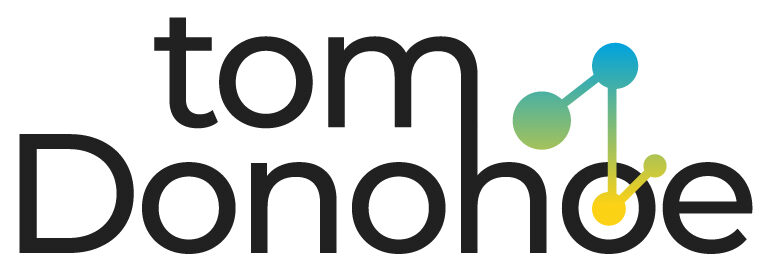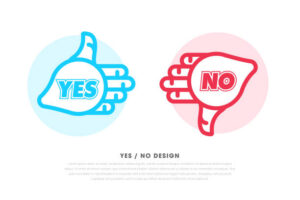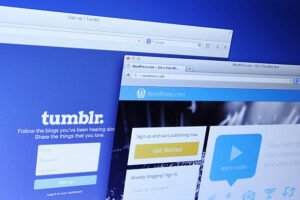Dove: A spotless approach to digital marketing

What do you imagine when you hear the word “soap”? Probably not “avant-garde” ” ahead of the times, ” and “disruptor. The Dove brand, however, has changed our perception of what a household product should look like and how it can be advertised.
In 1957, the Dove brand launched in America. Dove was initially positioned as a functional brand of soap. However, over time, its digital marketing campaigns have helped elevate this position and is now a game changer in the beauty industry.
Dove’s product line has grown over the years, including shampoos and conditioners, body wash, moisturizers, deodorants for men, and a separate male skincare and beauty range. The Dove brand is estimated to be worth approximately $5 billion U.S. Dollars in 2021. Its digital campaigns won awards both on a national level and globally over the past 15 years.
Dove is always innovative and brave. It invites customers and fans alike to reflect on their self-esteem and acceptance. This concept may seem contradictory given that most beauty advertising focuses on fixing or concealing personal imperfections. Dove manages to make it work.
Dove’s digital strategy is the key to its success.
Dove’s Creative Marketing Techniques
Look at some of Dove’s key marketing innovations, which have ripple effect in many sectors.
Building strong communities & starting difficult conversations
Dove pioneered in the category of real beauty as early as 2004. This hashtag is now common, but the concept of showing women in a realistic light without make-up or lighting was revolutionary at the time.
In the campaign’s first phase, billboards in the U.S. featured photographs of women who were not professional models. A cheeky question was asked to encourage audience participation. The billboard displayed the results of the votes from people passing by. Dove’s provocative and stand-out creative caught the eye of its target audience, at a time when rival brands still needed to grasp the importance of digital activation.
In the first ten years of the campaign, Dove’s sales jumped from $2.50 to $4.50 billion. Dove bars were the most popular soap in the U.S. Unilever’s best-selling product.
In 2006, the brand launched Dove Self-Esteem Project, an educational website designed to improve young people’s self-esteem. It includes online articles, video forums, and workshops covering bullying, body positivity and self-esteem. This was another industry first and clever activation technique. It showed Dove’s ability pivot to video content to respond to the growing consumption trend of this age group.
Dove’s award-winning Real Beauty sketches in 2006 turned the concept of self-portraits upside down. In this video, each woman was asked to describe themselves and then a stranger described her. A professional artist observed both women and then sketched portraits based on their different descriptions. The results were amazing, and the purpose was to show how we perceive ourselves in comparison with how others view us. The video became one of the most watched videos ever, and a series of even more touching videos for Mother’s Day 2013, showed daughters describing mothers.
Customers who have a strong emotional bond with them
Dove’s messaging reflects a keen understanding of the customer in each iteration. Digital marketing campaigns can be clever, innovative and groundbreaking, like their 2015 #SpeakBeautiful Campaign where they partnered up with Twitter to counter negative tweets regarding body image and respond to these Tweets in real-time. Twitter and Dove created a video about body shaming to launch the campaign. The video was shown during the Oscars 2015 pre-show.
Women used #SpeakBeautiful over 168,000 times in 2015, generating 800 million social media impressions for the campaign.
They worked with award winning photographers to capture photos of “real women” in their 2017 Real Women photo campaign. These photos highlighted their talent, determination and grit. These photos were uploaded to the content centre and tagged #beautiful by Shutterstock. This allowed them to appear in subsequent searches. Dove encouraged other brands and photographers to join in the cause. This was a clever way to recruit advocates for Dove’s #realbeauty campaign.
Interpretations of Beauty
Dove launched its 2018 “No distortion” campaign in response to the proliferation of social media and the increasing emphasis placed on body perfection among females aged 16-25. Dove’s “No Digital Distortion”, a symbol that confirms a photo has not been altered digitally, was introduced as a pushback against editing women’s bodies in print and online. The symbol is on all Dove products, including their print and digital ads and their branded/social media content. This is a constant reminder of Dove’s message on both traditional and digital platforms, reinforcing their commitment to #realbeauty.
Dove went even further in demonstrating their ethos and signed a global partnership for two years with the Cartoon Network show “Steven Universe”, to educate young people about body confidence, as part of its Self-Esteem project.
Dove and Getty Images partnered to collect more than 5,000 images from women, non-binary people, and individuals of diverse backgrounds. Like the Shutterstock 2017 campaign, Dove continues to invite advertisers and media to join their cause by using the photos and encouraging representation of all types of individuals.





